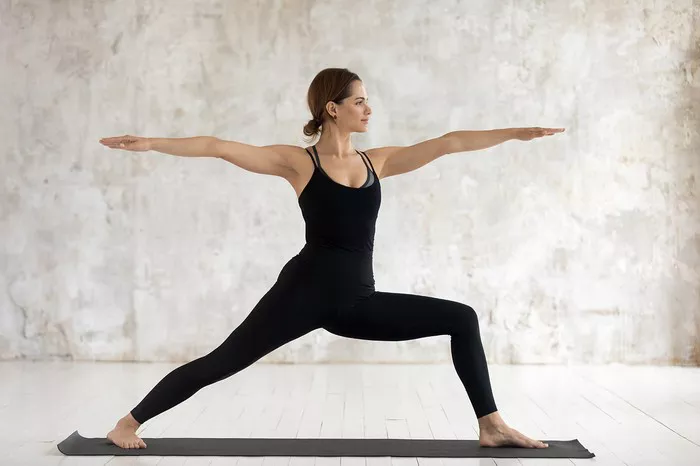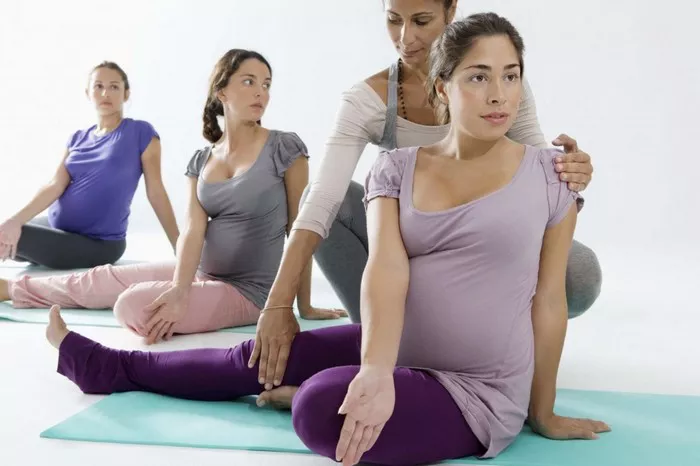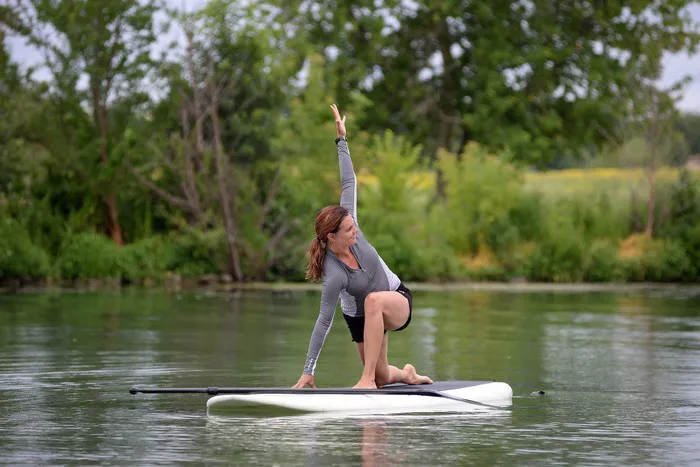Yoga is an ancient practice that has gained immense popularity across the world. It is not just about physical postures, but also a philosophy and lifestyle aimed at promoting mental clarity, physical health, and emotional balance. Whether you’re a seasoned practitioner or just beginning your yoga journey, understanding the basic rules of yoga is essential for a safe and effective practice.
This article will provide a detailed overview of the fundamental principles and guidelines, or “rules,” that every yoga practitioner should follow. These rules ensure that you practice yoga with awareness, respect for your body, and in alignment with yoga’s deeper purpose of self-awareness and growth.
The Basic Rules of Yoga
1. Practice with Awareness
The first and most important rule of yoga is to practice with awareness. Yoga is not just about moving your body from one posture to another; it is about being present in the moment. This means paying attention to how your body feels in each pose, noticing the breath, and tuning in to your thoughts and emotions.
Being mindful during your practice helps you avoid injury and ensures that you gain the full benefits of yoga. When you are fully present in the moment, you can deepen your practice, make adjustments as needed, and learn to listen to your body’s signals.
2. Honor Your Body’s Limitations
Yoga is not a competition, and there is no need to push yourself beyond your limits. It is crucial to respect your body’s natural flexibility, strength, and range of motion. Everyone’s body is different, so comparing yourself to others is counterproductive.
While yoga can help increase flexibility and strength over time, progress should be gradual. Forcing yourself into a pose or pushing too hard can lead to strain, discomfort, or injury. Always listen to your body and practice within your personal range of motion. Use props (like blocks or straps) to support your body in poses, and modify poses when needed.
3. Breathe Properly
In yoga, breathing (or pranayama) is just as important as the physical postures (asanas). Breath is the bridge between the body and mind, and controlling your breath helps cultivate focus and calmness during your practice.
The most common breathing technique used in yoga is Ujjayi breath, or “victorious breath,” which involves breathing in and out through the nose while creating a soft, audible sound in the back of the throat. This technique not only helps you stay present but also regulates the flow of energy in the body.
Always remember to breathe deeply, steadily, and rhythmically during your practice. Never hold your breath or breathe shallowly, as it can create tension and disrupt the flow of energy.
4. Start Slowly and Progress Gradually
When beginning your yoga practice, it’s essential to start with simple poses and basic sequences. Don’t rush into advanced postures right away. Yoga is a lifelong journey, and there is no need to try to master difficult poses too soon.
A typical yoga practice begins with basic standing poses, seated stretches, and relaxation techniques, building gradually over time. As your body becomes stronger and more flexible, you can move on to more challenging asanas. Patience and consistency are key—don’t expect immediate results.
5. Create Consistency
Yoga requires regular practice to experience its full benefits. It is better to practice yoga consistently for a shorter period than to practice intensely once in a while. Even if you can only dedicate 10 to 20 minutes a day, the consistency will create lasting positive effects.
Consistency not only helps improve your physical strength and flexibility, but it also nurtures mental and emotional resilience. Aim to practice at least 3 to 4 times a week, but listen to your body and adjust the frequency as needed.
6. Respect the Space Around You
Yoga is about creating an environment of calm, respect, and mindfulness. Whether you’re practicing at home, in a studio, or outdoors, always create a space that is free of distractions and conducive to focus.
If you’re practicing in a class, be considerate of your fellow practitioners by maintaining silence before and after the session. Avoid using your phone or engaging in conversations that could disturb the energy of the practice.
7. Avoid Overexertion
Yoga is not about pushing your body to its maximum capacity. It’s important to know the difference between effort and strain. While effort is necessary to deepen a pose and challenge your body, strain happens when you overexert yourself or force a movement.
The principle of ahimsa, or non-harm, should be applied to your practice. This means avoiding any action that causes physical or mental harm. If a posture causes pain or discomfort, back off, modify the pose, or skip it entirely.
8. Focus on Alignment
Proper alignment in yoga is essential for both safety and effectiveness. If your body is not aligned correctly during a pose, it can lead to unnecessary strain on joints and muscles, increasing the risk of injury.
In many poses, you’ll need to align your feet, hips, shoulders, and spine to maintain balance and create maximum benefit. If you are unsure of the alignment in a particular pose, ask a teacher for guidance or refer to instructional videos or books. Over time, proper alignment will become second nature.
9. Cultivate a Calm and Focused Mind
Yoga is not just a physical practice—it is a mental and spiritual one as well. The primary purpose of yoga is to cultivate a calm, clear, and focused mind. This is achieved through meditation, mindfulness, and breath control.
In yoga, the mind often wanders, but the goal is to bring it back to the present moment, focusing on your breath, your body, or a specific intention. Practice patience with your mind. Over time, yoga can help you reduce stress, anxiety, and mental clutter.
10. Practice Non-Judgment
The principle of aparigraha, or non-attachment, includes non-judgment of yourself and others. Everyone’s body and practice are unique. It’s important not to judge yourself based on how your practice looks compared to others. Your yoga practice should be a personal journey of self-discovery, not a competition.
Incorporate self-compassion into your practice. If you feel frustrated, remember that yoga is about progress, not perfection. Honor your journey, whether it’s a slow or fast one, and appreciate each small step you take toward greater well-being.
11. Be Mindful of the Use of Props
Yoga props, such as blocks, straps, and bolsters, are there to support your practice, not to be avoided. Many beginners feel they need to be able to do poses without props to be “good” at yoga, but this is not the case. Props can help you achieve proper alignment, deepen your stretches, and protect your joints.
Don’t be afraid to use props when necessary. They can make poses more accessible, help you build strength over time, and allow for greater relaxation during restorative poses.
12. Respect the Teacher
If you are practicing yoga in a class, it is important to respect your teacher. Teachers are trained professionals who have studied yoga for many years and are there to guide you safely through your practice.
Listen attentively to their instructions, follow their cues, and don’t hesitate to ask questions if you are unsure about a pose or alignment. Respect the teacher’s role in creating a safe and supportive environment for all students. Also, respect their teachings by practicing what is taught, rather than deviating from the class structure.
13. The Importance of Relaxation
Many people think yoga is all about strength, flexibility, and endurance, but relaxation is an equally important component of the practice. The final pose of most yoga classes is Savasana (Corpse Pose), which is a time for relaxation and integration.
During Savasana, you allow your body and mind to absorb the benefits of the practice. This pose is an essential part of every session and shouldn’t be skipped. It helps calm the nervous system, restore energy, and promote mental clarity.
14. Understand the Spiritual Aspect of Yoga
While yoga has a strong physical focus, it is rooted in spiritual principles. Yoga is a philosophy that goes beyond the mat, guiding practitioners towards a deeper understanding of themselves and the world around them.
At the core of yoga are the yamas (moral restraints) and niyamas (personal observances), which encourage ethical living. These principles teach values like non-violence, truthfulness, contentment, and self-discipline. While many yoga practitioners focus primarily on the physical aspects of the practice, the true goal of yoga is to find inner peace and connect with the higher self.
15. Yoga Is a Personal Journey
Finally, remember that yoga is a deeply personal journey. There is no right or wrong way to practice. Your journey will be unique to you, shaped by your body, mind, and life experiences. As long as you approach yoga with awareness, respect, and mindfulness, you are practicing yoga in its truest form.
See Also: Is Yoga as Good as Weight Training?
Conclusion
Yoga is more than just a series of physical poses—it is a comprehensive practice that involves the body, mind, and spirit. By following these basic rules of yoga, you can create a safe and effective practice that will benefit your physical health, mental clarity, and emotional well-being.
Remember to practice with awareness, respect your body’s limitations, breathe deeply, and be patient with your progress. Yoga is not about perfection, but about connecting with yourself and cultivating balance in every aspect of your life.
You Might Be Interested In:
























